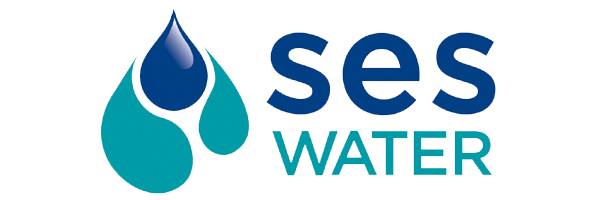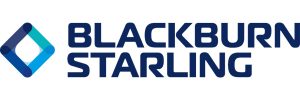Woodmansterne WTW (2016)
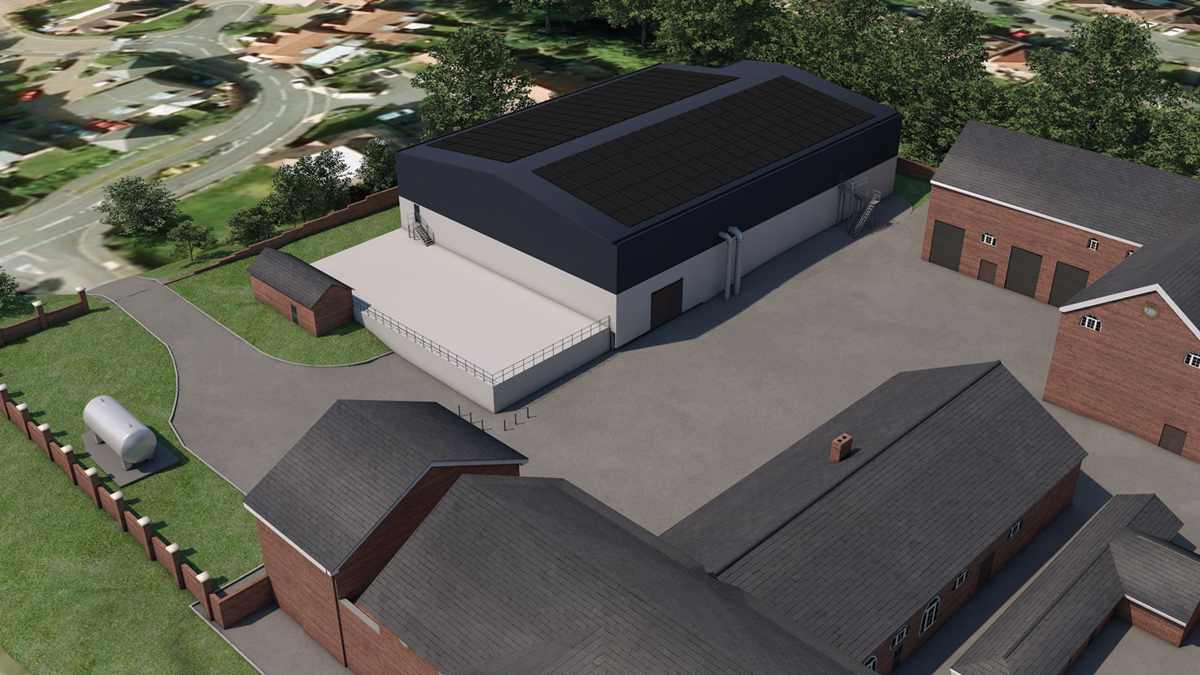
Preliminary 3D model of upgraded treatment works - Courtesy of Doosan Enpure
Woodmansterne WTW is being upgraded as part of Sutton and East Surrey Water’s (now SES Water) AMP6 investment to secure water supplies for existing and future customers throughout its supply area. The scope of works is to increase the treatment capacity to a maximum raw water flow of 50Mld. Doosan Enpure has been appointed as principal contractor for the provision of engineering, procurement and construction (EPC) of a new RGF treatment plant, chlorine contact tank, treated water pumping station and standby generator facility.
Background
Sutton & East Surrey Water Plc has made provision for capital expenditure within the AMP6 period for filter replacement and general upgrade works to be carried out at their Woodmansterne WTW.
Woodmansterne WTW was constructed in 1905. A major extension was undertaken in 1940, with the installation of a Permutit softening plant. In 1981 a new filter house and contact tank were added to the plant. The last major refurbishment to the works was completed in 2002, comprising the change of lime softening process from precipitators to pellet reactors, a new sludge treatment plant and various electrical works.
Current set up
Raw water is supplied to the works from 5 (No.) boreholes located in the immediate vicinity and 4 (No.) remote boreholes. The treatment process consists of carbon dioxide stripping, softening, filtration, disinfection (with chlorine gas), optional de-chlorination (with sulphur dioxide), orthophosphoric acid dosing and chloramination (with ammonia gas).
Woodmansterne WTW is being upgraded in order to increase the Works capacity to treat a maximum raw water flow of 50Mld. The general scope of the upgrade includes the provision of works and services to design, procure, construct, commission and test the new works.
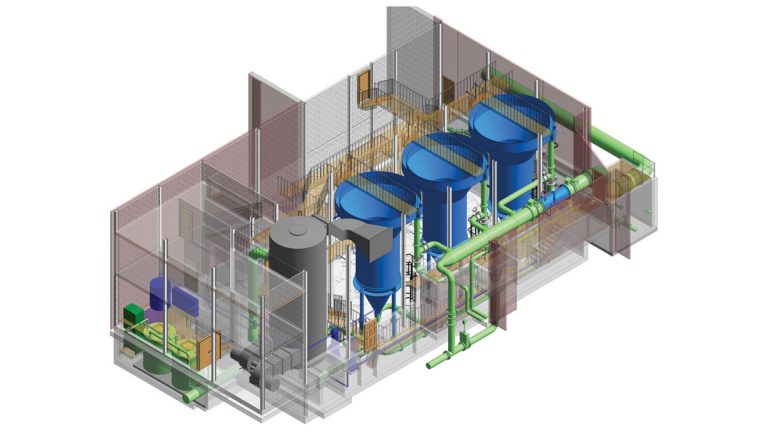
Preliminary 3D model of water softener building – Courtesy of Doosan Enpure
Outline of work
A brief outline to the work required is the design, supply installation, construction, testing and commissioning of:
- New pipework to combine output from the existing softening plant and blend stream, feeding the new rapid gravity filters.
- New dual media RGF Plant comprising 7 (No.) filters.
- New RGF backwash pumps.
- New RGF air scour blowers.
- New chlorine contact tank.
- New treated water pumping station with six new treated water pumps.
- New ferric sulphate and polyelectrolyte dosing to the new RGF feed manifold.
- New chlorine, sulphur dioxide and ammonia dosing to the new CCT.
- Conversion of existing CCT into a clean recirculation and wastewater storage tank.
- New recirculation pumps to transfer recovered supernatant to the new RGF inlet pipework.
- All necessary motor control cabinets, enclosures, cabling, controls and programming to provide automated control of the works.
- Replacement of the DC variable speed drives on the borehole pumps with AC variable frequency drives.
- Overflows and site drainage.
- All civil, architectural, building, roads and site works.
- 2 (No.) new generators in a re-modelled existing building and a new power management system including a new solar PV array to the new RGF building roof.
Design and construction challenges
As the site has been used for water treatment for many years it is very congested with underground services and pipelines, some abandoned and some live. Site investigation has proved to be the only way to ensure pipe routes can be achieved.
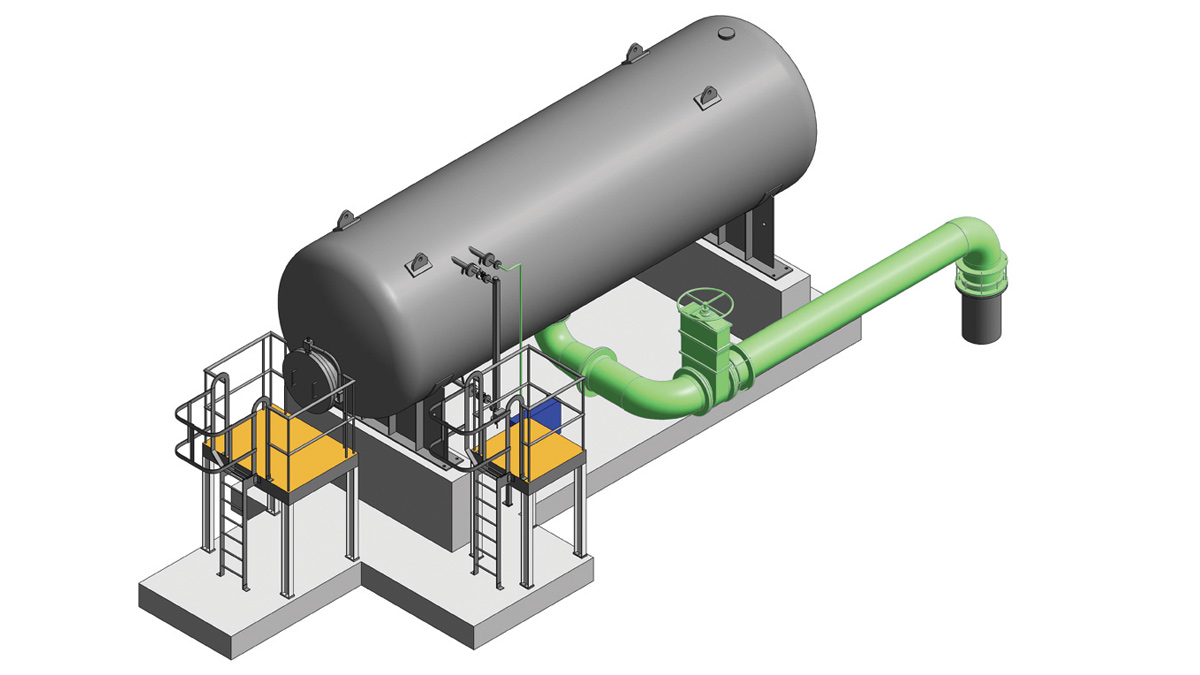
Preliminary 3D model of surge vessel and pipework – Courtesy of Doosan Enpure
For example, the existing on-site lagoon is used to discharge various waste process flows, including washouts, and is to become the location of the new RGF plant building. Therefore, re-routing the existing borehole washouts was needed, but required an on-site re-design following site excavation to expose the existing pipelines.
The design of the RGF building is compact. Due to space constraints the dirty washwater tank is located in the basement and air scour blowers and backwash pumps are positioned on top of the clean backwash water tank.
Throughout the upgrade the existing plant is to remain operable, with site shutdowns limited to 8 hours, delivering treated water to remote reservoirs at Burgh Heath and How Green. Careful sequencing of the commissioning and innovative routing of treated flows will be required. The RGF overflow will be used in reverse to get treated water to the new CCT and treated water pumping station. This should allow minimal interruption to the treated water supply whilst allowing the new RGF plant to be brought on line and seamlessly into service.
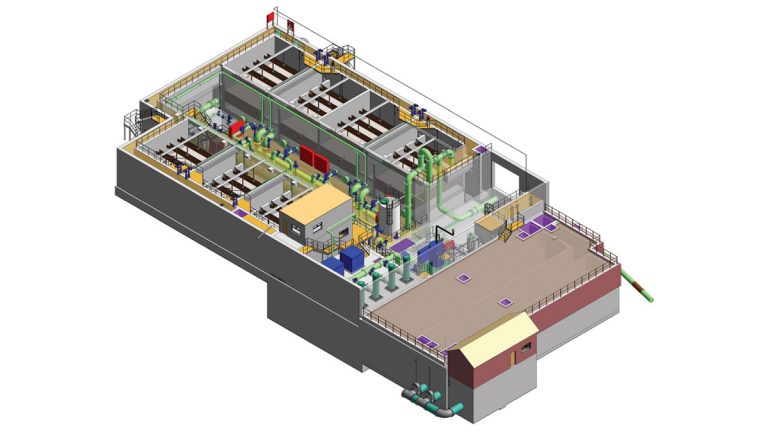
Preliminary 3D model of rapid gravity filter block – Courtesy of Doosan Enpure
Contract and programme
The contract will be delivered by utilising an Integrated Project Team, members of which will be Sutton and East Surrey Water, Doosan Enpure, CJ Thorne and Harold James.
Due to the operational importance and location of this works, this project will require careful sequencing of construction to enable the various parts of the existing works to be decommissioned and then transferred to the new facility and therefore the benefits of 3D modelling are being utilised.
Engagement with the local community will be paramount throughout the project, which will be carried out by the integrated project team.
The contract works commenced in December 2015 with an overall duration of 36 months.


